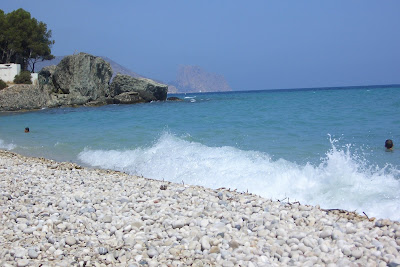China is not what it was. Or has it remained the same, while the rest of the world has changed?
This is something of a puzzle in itself and is illustrated by the way that China figures prominently in so many figures of Spanish speech still used by older generations.
Everybody knows that un cuento chino – a Chinese story is a tall story but anyone with few assets and pressing debts will probably be eligible for a free bus pass if they complain tengo más trampas que una pelicula china. Seldom used by the young, it loses its jaunty desperation in translation, sounding nearer to farce than tragedy: I’ve more snares than a Chinese film.
Cities and large towns in Spain still possess un barrio chino – Chinatown although it will be a red light district rather than a neighbourhood where restaurants serve Peking Duck.
Less specialised on both counts is tinta china or Indian ink while any work – trabajo involving considerable time and patience is a politically-incorrect – but still undeniably apt - trabajo de chinos.
¡Naranjas de la China! – Chinese oranges! (kumquats, according to some) conveys the same scepticism of that’ll be the day.
China also possesses a secondary Spanish meaning of fine china or porcelain but the everyday type produced in Staffordshire, for instance, is loza.
China with a capital letter refers to the country itself but because adjectives of nationality are written without capital letters in Spanish, una china means a small pebble as well as a Chinese woman.
Chino is the Chinese language, but un chino is a Chinese man although the term has acquired the meaning of a Chinese restaurant now that there are so many in Spain. More recently, un chino is also understood to mean a shop with Chinese owners which sells an enormous variety of objects at very low prices.
Jugar a los chinos refers to a game often played by carousing adults to determine who pays for a meal or the next round of drinks. It entails guessing the combined number of small objects concealed in a fellow-player’s closed fist, with the least consistent guesser footing the bill.
Anyone investigating the equivalent of a Chinese puzzle will find this is un rompecabezas although this word covers all types of posers – even jigsaws - and not the fiendishly taxing kind that English-speakers associate with this kind of brainteaser.
La quinta china is the back of beyond. It sounds as though it could be the Chinese estate, a group of recruits called up to go to China or a scrambled version of el quinto pino – the fifth pine, yet another way to describe the back of beyond.
Some people trace this to 18th century Madrid when the Paseo de Recoletos (still there, incidentally) was one of the city’s principal streets. This led north into what is now the Paseo de la Castellana (temporarily Paseo del Generalísimo, but that’s another story) which was planted with five perfectly aligned, perfectly spaced pine trees.
 |
| Pines in Cap Negret, not Madrid |
Madrid was smaller then and La Castellana was practically on the outskirts so the fifth pine – el quinto pino was, in those limited times, far enough away to be considered a very long way off.
Another faraway place, la Cochinchina, is your third option for the middle of nowhere but since this was once the Vietnamese region whose capital is Saigon, at least you'll know how to get there.


